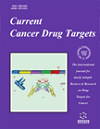-
oa Tectorigenin Inhibits Glycolysis-induced Cell Growth and Proliferation by Modulating LncRNA CCAT2/miR-145 Pathway in Colorectal Cancer
- Source: Current Cancer Drug Targets, Volume 24, Issue 10, Oct 2024, p. 1071 - 1079
-
- 01 Oct 2024
Abstract
Background: Colorectal cancer (CRC) places a heavy burden on global health. Tectorigenin (Tec) is a type of flavonoid-based compound obtained from the Chinese medical herb Leopard Lily Rhizome. It was found to exhibit remarkable anti-tumor properties in previous studies. However, the effect and molecular mechanisms of Tec in colorectal cancer have not been reported. Objective: The objective of this study was to explore the action of Tec in proliferation and glycolysis in CRC and the potential mechanism with regard to the long non-coding RNA (lncRNA) CCAT2/micro RNA-145(miR-145) pathway in vitro and in vivo . Methods: The anti-tumor effect of Tec in CRC was examined in cell and animal studies, applying Cell Counting Kit-8 (CCK-8) assay as well as xenograft model experiments. Assay kits were utilized to detect glucose consumption and lactate production in the supernatant of cells and animal serum. The expression of the glycolysis-related proteins was assessed by Western Blotting, and levels of lncRNA CCAT2 and miR-145 in CRC tissue specimens and cells were assessed by realtime quantitative PCR (RT-qPCR). Results: Tec significantly suppressed cell glycolysis and proliferative rate in CRC cells. It could decrease lncRNA CCAT2 in CRC cells but increase the expression of miR-145. LncRNA CCAT2 overexpression or inhibition of miR-145 could abolish the inhibitive effects of Tec on the proliferation and glycolysis of CRC cells. The miR-145 mimic rescued the increased cell viability and glycolysis levels caused by lncRNA CCAT2 overexpression. Tec significantly inhibited the growth and glycolysis of CRC xenograft tumor. The expression of lncRNA CCAT2 decreased while the expression of miR-145 increased after Tec treatment in vivo. Conclusion: Tec can inhibit the proliferation and glycolysis of CRC cells through the lncRNA CCAT2/miR-145 axis. Altogether, the potential targets discovered in this research are of great significance for CRC treatment and new drug development.


